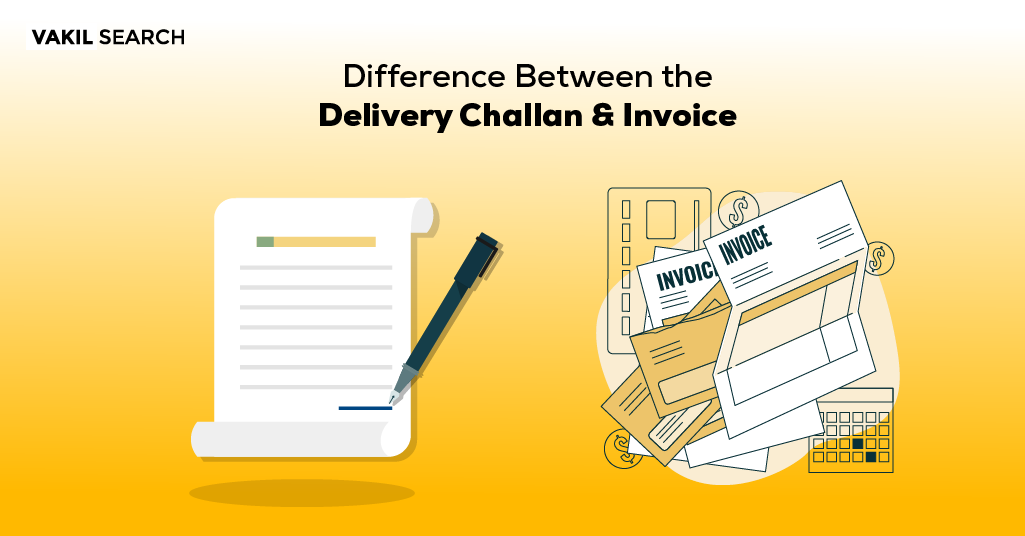Dive into the complexities of commerce with a detailed exploration of Delivery Challan and Invoice. Learn their distinct roles, legal importance, and relevance across various business scenarios.
Introduction
In the intricate world of commerce, understanding the nuanced differences between a Delivery Challan and an Invoice is paramount. This article aims to shed light on the distinctions between these two crucial documents, exploring their individual roles, legal implications, and relevance in diverse business scenarios.
Unveiling the Basics
What is a Delivery Challan?
A Delivery Challan is a legal document that serves as proof of the delivery or dispatch of goods from one location to another. It focuses on the logistics aspect of the transaction and includes details such as the description of goods, quantity, supplier information, and recipient details. Its primary purpose is to facilitate the smooth transportation of goods without the immediate need for a tax invoice.
What Is an Invoice?
An Invoice, on the other hand, is a comprehensive document that provides a detailed account of a commercial transaction. It includes essential information such as the transaction value, applicable taxes, and a breakdown of costs. Unlike a Delivery Challan, an Invoice is issued after the completion of a sale and serves as a formal demand for payment.
Key Differences
Timing of Issuance
Delivery Challan
- Issued before or during the transportation of goods.
- Focuses on facilitating the movement of goods without immediate invoicing.
Invoice
- Issued after the completion of a sale.
- Contains detailed transaction information, including costs and taxes.
Purpose and Focus
Delivery Challan
- Primarily focuses on logistics and proof of goods movement.
- Often a prerequisite for the movement of goods in specific situations.
Invoice
- Serves as a formal request for payment.
- Provides a detailed breakdown of the transaction, including costs and taxes.
Legal Implications
Delivery Challan
- Ensures transparency in goods movement.
- Mandatory for compliance with Goods and Services Tax (GST) regulations.
Invoice
- Essential for financial record-keeping and tax compliance.
- Serves as a legal document demanding payment for goods or services.
Relevance in Different Business Scenarios
Inter-Branch Transfers
Delivery Challan
- Essential for the smooth movement of goods between branches.
- Allows for the transfer without the immediate issuance of an invoice.
Invoice
- Issued once the inter-branch transfer is completed.
- Provides a detailed account of the transaction for financial and tax purposes.
Job Work and Processing:
Delivery Challan
- Facilitates the movement of materials in job work scenarios.
- Enables a seamless workflow without immediate invoicing.
Invoice
- Issued after job work completion.
- Includes transaction value, taxes, and serves as a demand for payment.
Temporary Movement of Goods
Delivery Challan
- Valid for temporary movements, such as trade exhibitions.
- Allows for the transfer without immediate invoicing.
Invoice
- Issued once the goods return or the temporary movement concludes.
- Provides a comprehensive record of the transaction for financial and tax purposes.
Legal Compliance and Record-Keeping
Compliance with GST Laws
Delivery Challan
- Essential for compliance with GST laws, providing proof of goods movement.
- Non-compliance may lead to penalties and legal repercussions.
Invoice
- Integral for GST compliance, serving as a formal demand for payment.
- Businesses must adhere to GST regulations to avoid legal consequences.
Record-Keeping Requirements
Delivery Challan
- Acts as a record of the movement of goods.
- Businesses must retain Delivery Challans for a specified period as per GST regulations.
Invoice
- Essential for maintaining accurate financial records.
- Businesses must retain invoices for a specified period for audit and compliance purposes.
Key Components of a Delivery Challan
Details of the Supplier and Recipient:
- Comprehensive information about the supplier and recipient is crucial.
- Includes business names, addresses, Goods and Services Tax Identification Numbers (GSTINs), and contact details.
Description of Goods
- Accurate and detailed descriptions of the goods being transported.
- Includes quantity, unit of measurement, and specific characteristics.
Mode of Transportation
- Specifies the mode of transportation, aiding in logistics and supply chain management.
Key Components of an Invoice
Transaction Value
- Clearly outlines the total value of the transaction.
- Includes costs such as the price of goods or services and any applicable taxes.
Tax Breakdown
- Provides a detailed breakdown of applicable taxes.
- Essential for tax compliance and transparency in financial transactions.
Payment Terms
- Outlines the terms and conditions for payment.
- Specifies due dates, discounts, and any other relevant payment information.
Conclusion
In conclusion, while both the Delivery Challan and Invoice are integral components of commercial transactions, they serve distinct purposes at different stages of the business process. Understanding their differences is crucial for businesses to navigate legal compliance, maintain transparent records, and ensure seamless operations. Whether facilitating the movement of goods or formalising payment demands, the distinct roles of the Delivery Challan and Invoice contribute to the efficiency and integrity of commercial transactions in the dynamic world of commerce. Vakilsearch plays a pivotal role in aiding businesses to comprehend and implement these distinctions effectively, providing expert guidance to ensure compliance and operational efficiency.
Frequently Asked Questions
What is the primary purpose of a Delivery Challan?
A Delivery Challan primarily serves as proof of goods dispatch, focusing on logistics. It includes details like the description of goods, quantity, and supplier and recipient information, facilitating smooth transportation without an immediate tax invoice.
How does the timing of issuance differ between a Delivery Challan and an Invoice?
A Delivery Challan is issued before or during goods transportation, emphasising movement without immediate invoicing. In contrast, an Invoice is issued after a sale's completion, detailing transaction values, costs, and taxes, serving as a formal payment demand.
What legal implications are associated with a Delivery Challan?
A Delivery Challan ensures transparency in goods movement and is crucial for Goods and Services Tax (GST) compliance. Non-compliance may lead to penalties and legal repercussions, making adherence to prescribed formats and regulations essential for businesses.
In what scenarios is an Invoice essential, and how does it differ from a Delivery Challan?
An Invoice is essential after a sale's completion, serving as a formal payment demand. Unlike a Delivery Challan, an Invoice provides a detailed breakdown of transaction values, applicable taxes, and costs, playing a vital role in financial record-keeping and tax compliance.
How do Delivery Challans and Invoices contribute to record-keeping requirements for businesses?
A Delivery Challan acts as a record of goods movement, with businesses required to retain it for a specified period as per GST regulations. In contrast, an Invoice is essential for maintaining accurate financial records, and businesses must retain it for audit and compliance purposes.










